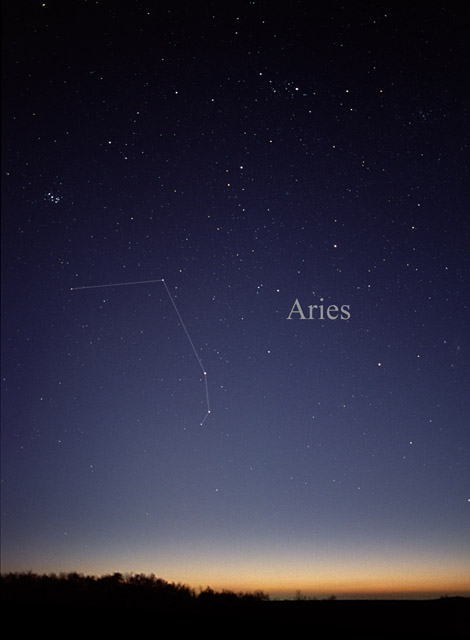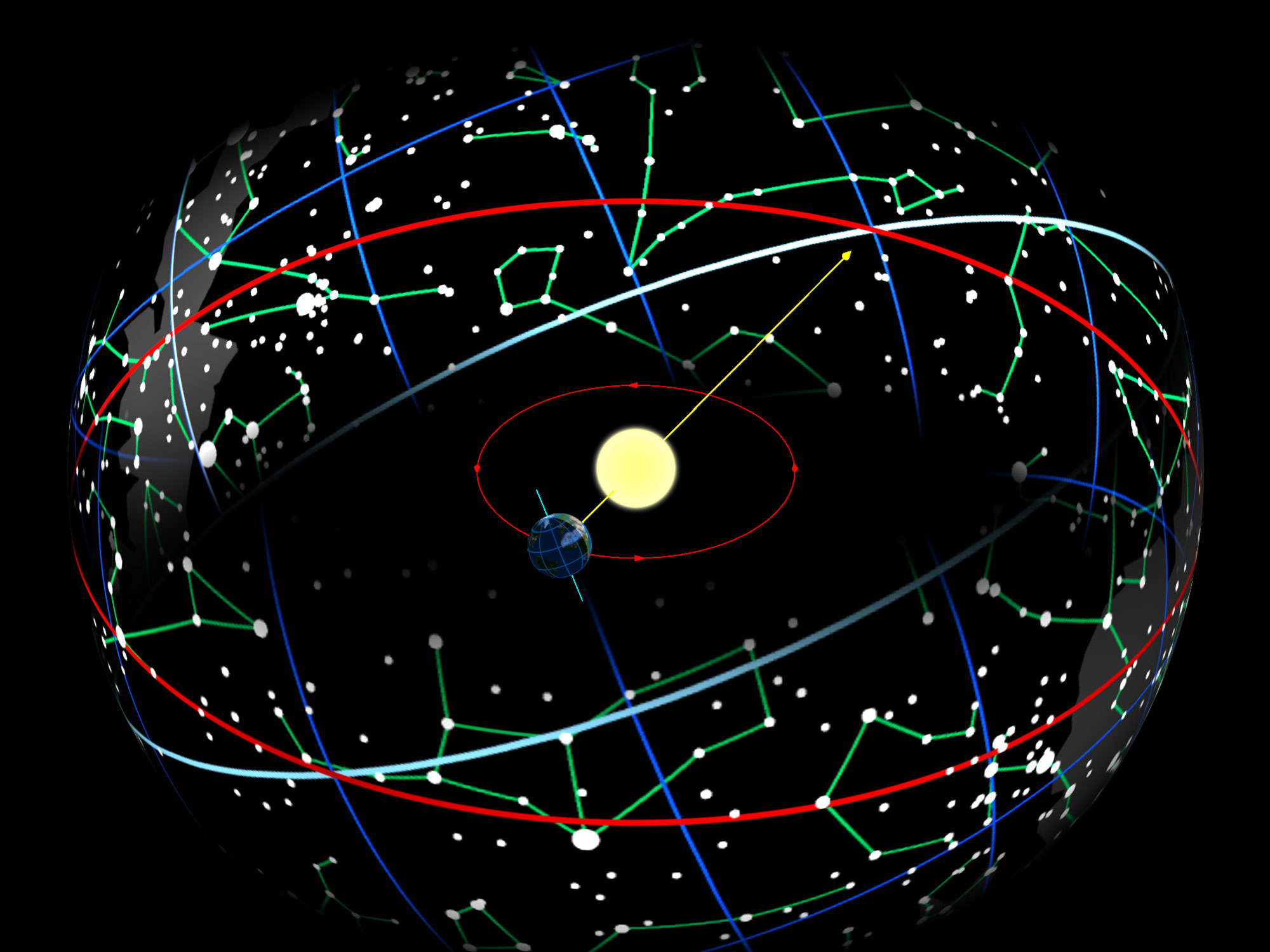|
Hamal
Hamal , designation Alpha Arietis (α Arietis, abbreviated Alpha Ari, α Ari), is the brightest star in the northern zodiacal constellation of Aries. With an apparent visual magnitude of 2.0, it is the mean 50th-brightest star in the night sky. Based upon parallax measurements made with the ''Hipparcos'' astrometry satellite, Hamal is about from Earth. It is a giant star that may host an orbiting planet with a mass greater than Jupiter. Nomenclature ''Alpha Arietis'' is the star's Bayer designation. It also bears the Flamsteed designation of 13 Arietis. The traditional name ''Hamal'' (also written ''Hemal'', ''Hamul'', ''Ras Hammel'') derives from the Arabic ''rās al-ħamal'' "head of the ram", in turn from the name for the constellation as a whole, ''Al Ħamal'' "the ram". In 2016, the International Astronomical Union organized a Working Group on Star Names (WGSN) to catalog and standardize proper names for stars. The WGSN's first bulletin of July 2016 included ... [...More Info...] [...Related Items...] OR: [Wikipedia] [Google] [Baidu] |
Aries (constellation)
Aries is one of the constellations of the zodiac. It is located in the Northern celestial hemisphere between Pisces to the west and Taurus to the east. The name Aries is Latin for ram. Its old astronomical symbol is (♈︎). It is one of the 48 constellations described by the 2nd century astronomer Ptolemy, and remains one of the 88 modern constellations. It is a mid-sized constellation ranking 39th in overall size, with an area of 441 square degrees (1.1% of the celestial sphere). Aries has represented a ram since late Babylonian times. Before that, the stars of Aries formed a farmhand. Different cultures have incorporated the stars of Aries into different constellations including twin inspectors in China and a porpoise in the Marshall Islands. Aries is a relatively dim constellation, possessing only four bright stars: Hamal (Alpha Arietis, second magnitude), Sheratan (Beta Arietis, third magnitude), Mesarthim (Gamma Arietis, fourth magnitude), and 41 Arietis (als ... [...More Info...] [...Related Items...] OR: [Wikipedia] [Google] [Baidu] |
Zodiac
The zodiac is a belt-shaped region of the sky that extends approximately 8° north or south (as measured in celestial latitude) of the ecliptic, the apparent path of the Sun across the celestial sphere over the course of the year. The paths of the Moon and visible planets are within the belt of the zodiac. In Western astrology, and formerly astronomy, the zodiac is divided into twelve signs, each occupying 30° of celestial longitude and roughly corresponding to the following star constellations: Aries, Taurus, Gemini, Cancer, Leo, Virgo, Libra, Scorpio, Sagittarius, Capricorn, Aquarius, and Pisces. These astrological signs form a celestial coordinate system, or more specifically an ecliptic coordinate system, which takes the ecliptic as the origin of latitude and the Sun's position at vernal equinox as the origin of longitude. Name The English word ' derives from , the Latinized form of the Ancient Greek ( ), meaning "cycle or circle of little anim ... [...More Info...] [...Related Items...] OR: [Wikipedia] [Google] [Baidu] |
List Of Brightest Stars
This is a list of stars arranged by their apparent magnitude – their brightness as observed from Earth. It includes all stars brighter than magnitude +2.50 in visible light, measured using a ''V''-band filter in the UBV photometric system. Stars in binary systems (or other multiples) are listed by their ''total'' or ''combined'' brightness if they appear as a single star to the naked eye, or listed separately if they do not. As with all magnitude systems in astronomy, the scale is logarithmic and inverted i.e. lower/more negative numbers are brighter. Most stars on this list appear bright from Earth because they are nearby, not because they are intrinsically luminous. For a list which compensates for the distances, converting the ''apparent'' magnitude to the ''absolute'' magnitude, see the list of most luminous stars. Measurement The Sun is the brightest star as viewed from Earth, at −26.74 mag. The second brightest is Sirius at −1.46 mag. For compa ... [...More Info...] [...Related Items...] OR: [Wikipedia] [Google] [Baidu] |
J2000
In astronomy, an epoch or reference epoch is a moment in time used as a reference point for some time-varying astronomical quantity. It is useful for the celestial coordinates or orbital elements of a celestial body, as they are subject to perturbations and vary with time. These time-varying astronomical quantities might include, for example, the mean longitude or mean anomaly of a body, the node of its orbit relative to a reference plane, the direction of the apogee or aphelion of its orbit, or the size of the major axis of its orbit. The main use of astronomical quantities specified in this way is to calculate other relevant parameters of motion, in order to predict future positions and velocities. The applied tools of the disciplines of celestial mechanics or its subfield orbital mechanics (for predicting orbital paths and positions for bodies in motion under the gravitational effects of other bodies) can be used to generate an ephemeris, a table of values giving the positions ... [...More Info...] [...Related Items...] OR: [Wikipedia] [Google] [Baidu] |
Bond (Chinese Constellation)
''Leu'' (or ''Low'') ''sieu'' () meaning "the Train of a garment", was one of the Twenty-eight mansions, twenty-eight lunar mansions of the traditional Chinese astronomy. It was one of the White Tiger (Chinese constellation), White Tiger of the West (西方白虎). The asterisms in the Region of ''Leu'' (婁宿天區) Notes See also * Traditional Chinese star names References * * 大崎正次 (1987). 『中国の星座の歴史』 雄山閣出版. External links * 陳冠中, 陳輝�「中國古代的星象系統 (71): 婁宿天區」 - 天文教育資訊網 (AEEA) {{Chinese constellation Chinese constellations ... [...More Info...] [...Related Items...] OR: [Wikipedia] [Google] [Baidu] |
Chinese Astronomy
Astronomy in China has a long history stretching from the Shang dynasty, being refined over a period of more than 3,000 years. The ancient Chinese people have identified stars from 1300 BCE, as Chinese star names later categorized in the twenty-eight mansions have been found on oracle bones unearthed at Anyang, dating back to the mid-Shang dynasty. The core of the "mansion" (宿 ''xiù'') system also took shape around this period, by the time of King Wu Ding (1250–1192 BCE). Detailed records of astronomical observations began during the Warring States period (fourth century BCE) and flourished from the Han period onward. Chinese astronomy was equatorial, centered on close observation of circumpolar stars, and was based on different principles from those in traditional Western astronomy, where heliacal risings and settings of zodiac constellations formed the basic ecliptic framework. Joseph Needham has described the ancient Chinese as the most persistent and accurat ... [...More Info...] [...Related Items...] OR: [Wikipedia] [Google] [Baidu] |
Working Group On Star Names
The International Astronomical Union (IAU) established a Working Group on Star Names (WGSN) in May 2016 to catalog and standardize List of proper names of stars, proper names for stars for the international astronomical community. It operates under Division C – Education, Outreach and Heritage. The IAU states that it is keen to make a distinction between the terms Stellar designations and names, ''name'' and ''designation''. To the IAU, ''name'' refers to the (usually colloquial) term used for a star in everyday conversation, while ''designation'' is solely alphanumerical, and used almost exclusively in official catalogues and for professional astronomy. (The WGSN notes that transliteration, transliterated Bayer designations (e.g., Tau Ceti) are considered a special historical case and are treated as designations.) Terms of reference The terms of reference for the WGSN for the period 2016–2018 were approved by the IAU Executive Committee at its meeting on 6 May 2016 ... [...More Info...] [...Related Items...] OR: [Wikipedia] [Google] [Baidu] |
International Astronomical Union
The International Astronomical Union (IAU; french: link=yes, Union astronomique internationale, UAI) is a nongovernmental organisation with the objective of advancing astronomy in all aspects, including promoting astronomical research, outreach, education, and development through global cooperation. It was founded in 1919 and is based in Paris, France. The IAU is composed of individual members, who include both professional astronomers and junior scientists, and national members, such as professional associations, national societies, or academic institutions. Individual members are organised into divisions, committees, and working groups centered on particular subdisciplines, subjects, or initiatives. As of 2018, the Union had over 13,700 individual members, spanning 90 countries, and 82 national members. Among the key activities of the IAU is serving as a forum for scientific conferences. It sponsors nine annual symposia and holds a triannual General Assembly that sets policy ... [...More Info...] [...Related Items...] OR: [Wikipedia] [Google] [Baidu] |
Arabic
Arabic (, ' ; , ' or ) is a Semitic language spoken primarily across the Arab world.Semitic languages: an international handbook / edited by Stefan Weninger; in collaboration with Geoffrey Khan, Michael P. Streck, Janet C. E.Watson; Walter de Gruyter GmbH & Co. KG, Berlin/Boston, 2011. Having emerged in the 1st century, it is named after the Arab people; the term "Arab" was initially used to describe those living in the Arabian Peninsula, as perceived by geographers from ancient Greece. Since the 7th century, Arabic has been characterized by diglossia, with an opposition between a standard prestige language—i.e., Literary Arabic: Modern Standard Arabic (MSA) or Classical Arabic—and diverse vernacular varieties, which serve as mother tongues. Colloquial dialects vary significantly from MSA, impeding mutual intelligibility. MSA is only acquired through formal education and is not spoken natively. It is the language of literature, official documents, and formal writ ... [...More Info...] [...Related Items...] OR: [Wikipedia] [Google] [Baidu] |
Giant Star
A giant star is a star with substantially larger radius and luminosity than a main-sequence (or ''dwarf'') star of the same surface temperature.Giant star, entry in ''Astronomy Encyclopedia'', ed. Patrick Moore, New York: Oxford University Press, 2002. . They lie above the main sequence (luminosity class V in the Yerkes spectral classification) on the Hertzsprung–Russell diagram and correspond to luminosity classes II and III.giant, entry in ''The Facts on File Dictionary of Astronomy'', ed. John Daintith and William Gould, New York: Facts On File, Inc., 5th ed., 2006. . The terms ''giant'' and ''dwarf'' were coined for stars of quite different luminosity despite similar temperature or spectral type by Ejnar Hertzsprung about 1905. Giant stars have radii up to a few hundred times the Sun and luminosities between 10 and a few thousand times that of the Sun. Stars still more luminous than giants are referred to as supergiants and hypergiants. A hot, luminous main-seque ... [...More Info...] [...Related Items...] OR: [Wikipedia] [Google] [Baidu] |
Astrometry
Astrometry is a branch of astronomy that involves precise measurements of the positions and movements of stars and other celestial bodies. It provides the kinematics and physical origin of the Solar System and this galaxy, the Milky Way. History The history of astrometry is linked to the history of star catalogues, which gave astronomers reference points for objects in the sky so they could track their movements. This can be dated back to Hipparchus, who around 190 BC used the catalogue of his predecessors Timocharis and Aristillus to discover Earth's precession. In doing so, he also developed the brightness scale still in use today. Hipparchus compiled a catalogue with at least 850 stars and their positions. Hipparchus's successor, Ptolemy, included a catalogue of 1,022 stars in his work the ''Almagest'', giving their location, coordinates, and brightness. In the 10th century, Abd al-Rahman al-Sufi carried out observations on the stars and described their positions, magn ... [...More Info...] [...Related Items...] OR: [Wikipedia] [Google] [Baidu] |






